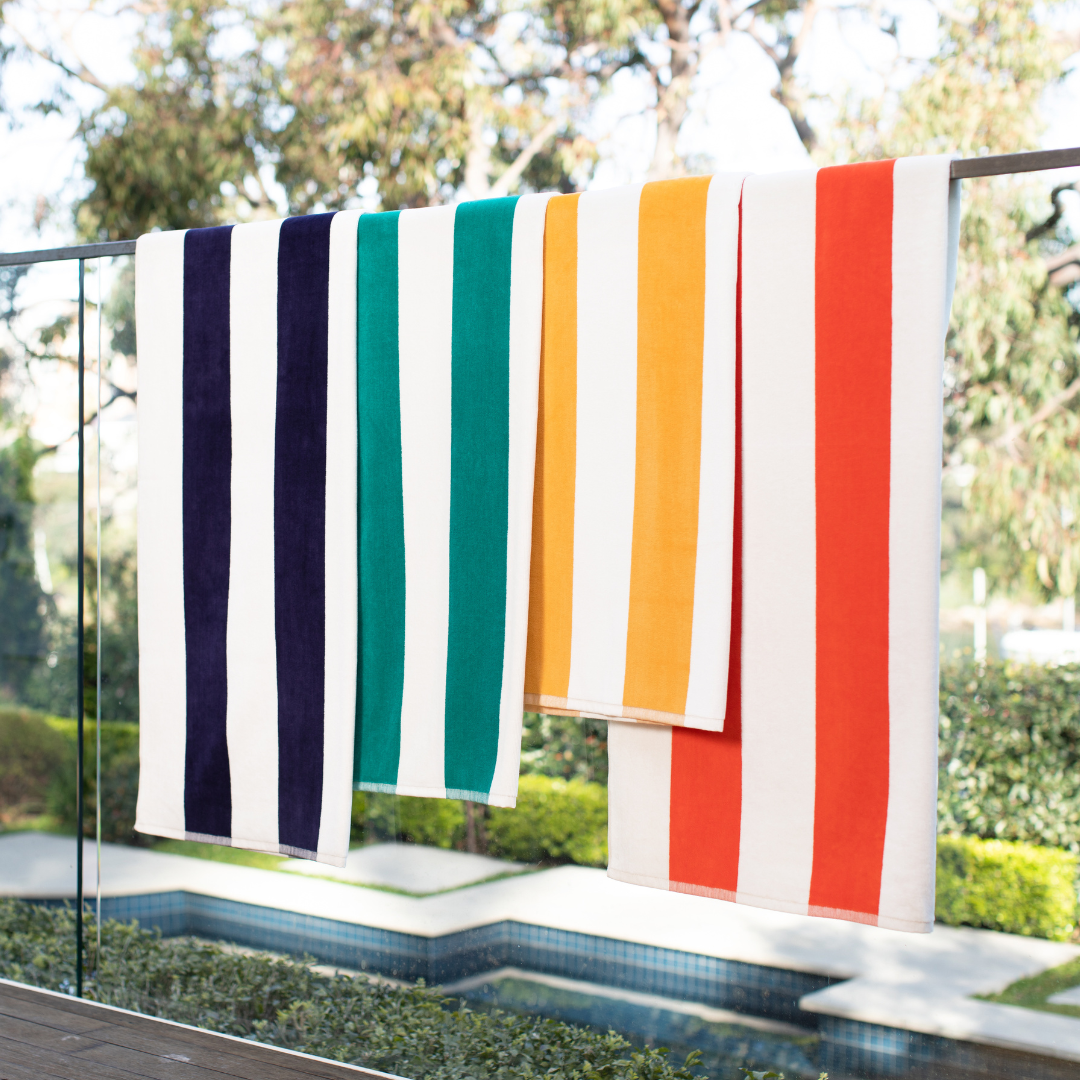
Share
Summer is on its way – and so, too, is the parade of beach towels lining pools and coastlines around the country. Of course, a towel’s primary function may be to dry our bodies after a dip, but we also know that a plush, aesthetically-pleasing specimen is more than just practical: it can enhance our entire experience of being by the water.
So if you’re toting around a threadbare, stiff or dated towel and feel it’s time for an upgrade, read on – we’ll help you find the perfect towel to roll into your beach bag and advise on how to keep it pristine and poolside-ready for many swim seasons to come.
Dried and tested
First, it helps to know that there are a few different types of beach towel. A velour towel is “sheared” on one side, to produce the velour effect, and terry on the other side, like this one. “The velour side is softer and the terry side is more absorbent,” says Polite Society’s Scott Cooke. “It’s the perfect marriage.”
You can also opt for full terry if you like a little more absorbency, or a short terry option, which is still absorbent, but arguably more attractive. Then there’s the pareo style, which is more popular in Europe. “It’s a thin, fabric towel that’s lightweight and folds up smaller to fit easily into a bag, but it’s not so popular in Australia,” says Cooke.
Whatever style you choose, there’s one rule, says Cooke. “All beach towels should be 100% cotton.” The perfect towel will be large enough to keep sand at bay (but not so large that you can’t dig your toes into it if you want to), and a reasonable weight – look for 300-400 gsm, says Cooke. “I love a bright distinctive design so it’s easily located in a crowd, and it’s always a bonus if it complements your swimwear.”
When it comes to the crunch…
To keep your towel beach-ready for years, it pays to take a little extra care. “It’s important not to use fabric softeners, a chemical similar to silicon, which will impede absorbency and ruin the towel over time, “ says Cooke.
Is he a soft, plush-towel fan, or does he prefer his crunchy? “Each group swears by their preferred version; I have to say I’m happy either way,” says Cooke. If you prefer yours soft, drying it in the clothes dryer will do the trick – but if you prefer a stiffer feel, line drying is the way to go.
Now all you need is the swimsuit to match.







